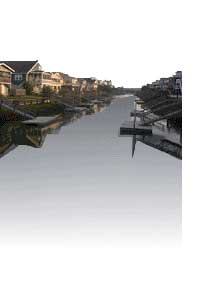Roads and Transport.
Travellers in Britain had plodded along trackways long before the
Romans came. But the Romans needed paved, all weather roads to carry heavy wagons and marching troops. They made highways
all over their empire, and soon built a network of roads across Britain. Some modern British roads follow routes laid out
by Roman engineers.
Of all Roman roads in Britain, the longest and straightest was the Fosse Way. It Began at Exeter and crossed
the country north eastwards to the River Humber. The road was mainly a military route, dividing the Romanized south from the
Rest of Britain.
Roads between the main settlements had forts along them for army use, but most routes were built
for trade and to link towns. The Roman engineers began by building on ancient trackways, mostly on high, dry ground
to avoid the forests and the marshes. But to make more direct roads they had to use more difficult routes over various landscapes.
Roman roads were often, but not always built straight. Because heavy wagons were hard to pull uphill, especially
on a wet, boggy ground, engineers laid a base of timber and brushwood, or hammered in wooden piles to support the road.
Horses or oxen pulled vehicles that included four wheeled wagons and coaches and smaller two-wheeled carts.
Wealthy people also travelled in litters carried by servants.
Ships, mostly from Gaul, docked at the ports of Richborough and Dover in Kent. To guide ships the Romans
built two light houses at Dover. Trade also passed through ports in the west country, East Anglia and North East England.
